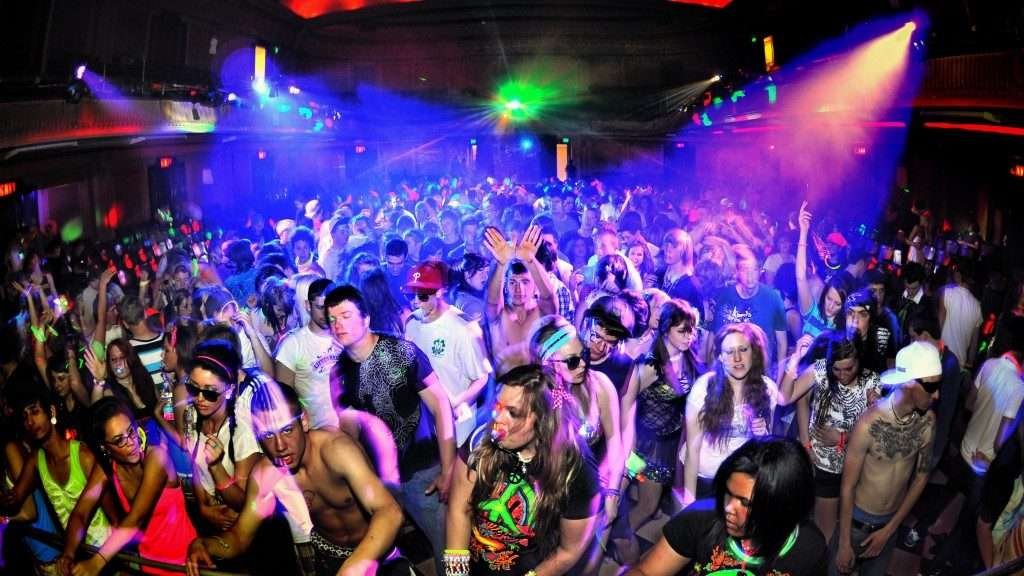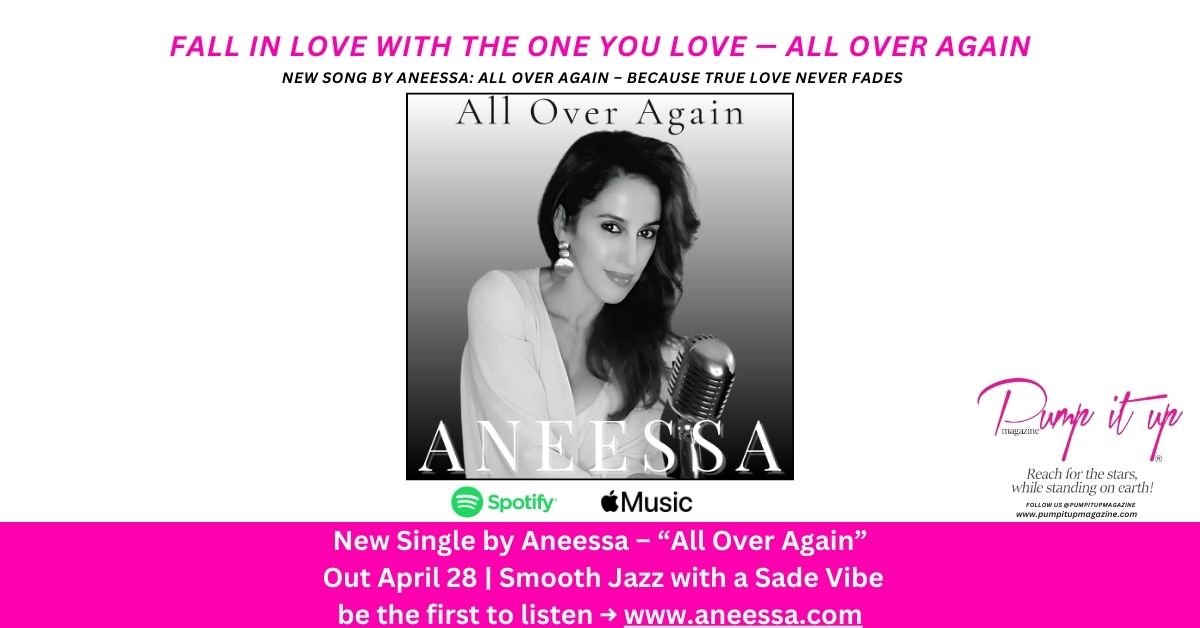In September 1987, four London club and pirate-radio DJs – Nicky Holloway, Paul Oakenfold, Danny Rampling and Johnny Walker – spent a week on the Balearic island of Ibiza, a place where, legend had it, as journalist Chris Heath wrote in 1990, “it was even possible to get drugs on room service.” The British quartet was visiting Trevor Fung and Ian St. Paul, with whom Oakenfold had thrown parties. Eventually, the group wound up at Amnesia, a large open-air space run by DJ Alfredo.
‘I think in music there’s no boundaries,’ he says
Suddenly, this knot of MDMA-fueled English soul boys with few musical interests outside black American imports like go-go, funk, hip-hop and jazz-funk were suddenly grooving like mad to indie guitar bands and pop songs – and especially to the minimalist house records coming from Chicago and bleep-y techno from Detroit, which didn’t hew to pop-song structure but spoke fluently to bodies in motion. “I could see their minds, their brains ticking overtime,” St. Paul said in 2001. “It was like Wacky Races – who could get back quick enough to get it sorted.”
Though Oakenfold threw Balearic-style parties both before and after the 1987 Ibiza trip – he and St. Paul would start Future shortly after returning – it was Rampling’s Shoom that effectively kicked off the acid-house craze in London. Rampling’s weekly began on December 5th, 1987, running on Saturdays in the basement of the Fitness Centre in Southwark, before moving first to a larger YMCA basement on Tottenham Court Road, and finally to Busby’s in Charing Cross Road. Rampling shut Shoom down in early 1990.
These were small venues: Rampling’s then-wife, Jenni, guarded the door, picking and choosing the crowd with an iron will. She needed to, because thousands of punters were trying to get into a gym basement that held 300. Shoom was the crucial model for what would become the entire global rave scene, and therefore EDM culture as we know it. “It wasn’t just me, and my energy as a DJ, it was the enthusiasm from the crowd,” Rampling tells Rolling Stone, looking back on the party’s impact. “Whether it be the Cavern [Club] with the Beatles or the Paradise Garage or the Warehouse in Chicago, it’s a combination of the crowd and the music and the room and the vibe and the spirit of that room.”
Rampling, along with Oakenfold and fellow London DJs Carl Cox (who played Shoom’s opening night) and Terry Farley (a second-room resident at Shoom’s YMCA location) spoke with RS about the wild, pivotal days of Shoom.
I. Prehistory
Carl Cox: Danny Rampling was basically playing funk, soul and disco music at the time. I used to go and see him play at the local wine bars and pubs and certain funk and soul parties in the area.
Danny Rampling: I was DJ’ing at parties and on pirate radio with Kiss FM – a late-night slot, which was a real fortunate break. I worked with Nicky Holloway as his assistant. He was an established, leading club promoter in London. He did one-off events. I learned the business of promotion and how to set up an event.
Terry Farley: In that time in London, if you looked at what was being played, musically, it was a real mishmash. DJs would play a Pharaoh Sanders record next to Run-D.M.C., and then a New York club record like “D” Train. The DJs were black music enthusiasts. We wouldn’t play any records by white artists. The idea of a whole night of just house music being mixed wasn’t in the scheme of things in London: “Why would you want to do that? That means you can’t play jazz records. It means you can’t play hip-hop records.”
Paul Oakenfold: I remember spending my money on an import Isley Brothers album and then having to dodge the landlord because I didn’t have enough money to pay rent.
Carl Cox: When I heard the first tune by Chip E. called “Time to Jack,” I was in. We never had a scene for that type of music in the UK. We had to create that scene.
Paul Oakenfold: At that time I was dealing with Public Enemy, L.L. Cool J, Beastie Boys. I was always a fan of house music because I was playing it as a DJ. So I started to get more involved in that side of things. I was looking after DJ International and Trax Records, signing a lot of it to Champion. Steve “Silk” Hurley – I promoted that record [“Jack Your Body,” a U.K. Number One in January 1987] for London Records. It surprised everyone. Those records were bubbling under – you knew one would break through, and that was the record.
II. Ibiza
Danny Rampling: I’d been living in America for a year. I ended up in Florida. Toward the end of that trip a friend visited me from London. We had an accident on the wet roads of southern Florida. If it hadn’t been for one of the roadside safety barriers, we both would have been dead. It really changed my outlook on life. I came back to England and Paul Oakenfold was having a birthday party in Ibiza. Nicky Holloway said, “Would you like to come along as well?” I said great, because I’d read about Amnesia, this after-hours club that goes at 3:30 or 4 in the morning, out in the open air, in The Face magazine.
Terry Farley: The general idea people had of MDMA [was what] a famous pop star told me: “It’s brilliant, but you can’t dance on it. It just makes your legs wobbly. All it does is make you want to sit down and hug people.”
Paul Oakenfold: I knew of [DJ Alfredo] because I’d been there the year before and the year before that. The reason we got to know him personally is because I was promoting records. I would turn up with a bundle of records under my arm. One time, prior to that, I climbed over the wall with my buddy because we were desperate to get in. That was ’87. That was before I had the promos in my hand. I used to sleep on the floor. I had half a loaf of bread everyday – that was it. I had no money.
Danny Rampling: Alfredo was a complete alchemist. He’d start with funky stuff – hip-hop, Latin, pop, all sorts of music and genres – and then as people came into the club, he’d pick it up and start to move into house and techno. Really, that was a complete revelation. We went there every night, and we all came back and decided to start our respective clubs.
Terry Farley: It was only when people went to Ibiza [that anyone] said, “There’s hundreds of people and the energy they’re getting off of each other fed back to all of the people, even the ones who didn’t want to take drugs.” You just needed to be standing near people who were taking ecstasy, because you could still catch the vibe.
III. Shoom
Danny Rampling: I opened Shoom with my wife at the time, Jenni, at the Fitness Centre, which was a gymnasium during the week. I had played there at a private event three or four years before that. I had a strong inclination that I would be coming back to that room. The management remembered me and said, “Yeah, you can host a night here. It’s going to be 300 pounds.” It was every Saturday night from 11 till 5 in the morning.
Carl Cox: Shoom was in a financial area. It’s quite dead at night. So there was nobody complaining at all.
Terry Farley: At that time, we all went to West End clubs. South of the river – it was like someone dragging you from Manhattan to Queens to go to a nightclub. A lot of cabs didn’t even want to go south of the river in London at that time. The streets were empty.
Danny Rampling: The first guest was Carl Cox, who had a very good sound system. He came and did the opening night. He was giving me a bit of guidance. Certainly, I wasn’t as skilled at mixing as he was at the time.
Carl Cox: The first night of the doors opening at Shoom, half the crowd was there to hear funk and soul and disco music. Half the crowd turned up wearing disco gear – Afro wigs, platform shoes, flares. They came down to boogie. They didn’t come down to rage. So half the crowd was looking at the DJ going, “What’s this music?” And the others were in dungarees and Day-Glo. It did take people a little while to adjust to the fact that that down-tempo music, that funk and soul, was behind us.
Danny Rampling: The gym equipment was pushed to one side of the room, and then [covered by] a banner drape with Day-Glo paint and paintings of yellow smiley faces and “Shoom” painted onto it. The DJ console was set up in front of that banner. It did transpire years later that people were disappearing behind that bannered area and having, um, all kinds of fun – a lot of intimate fun [laughs], unbeknown to me. The first official party was on December 5th.
Terry Farley: You had two or three years of Chicago house music that had largely been ignored, that was there to be used. Suddenly, you could hear about 20 amazing records. Once you heard these records in the right way, suddenly it was a magical spark. Shoom definitely was for many the club that lit that spark.
Carl Cox: You’d be there for the long-haul journey of it all. It wasn’t about the big records; it was about the journey of the night and where it took you.
Danny Rampling: I used to open with Barry White, “Ecstasy” [“It’s Ecstasy When You Lay Down Next to Me”], a very slow record. That would be the call to the dance floor. I would start at 95, 100 BPM, and then step it up to 105 BPM, 110, 115, and then into 115 to 120, the house sounds. Phuture’s “Acid Tracks” – the seminal acid track: that was rotated weekly. The signature tune for Shoom at the Fitness Centre was definitely the Nightwriters’ “Let the Music Use You,” produced by Frankie Knuckles.
Terry Farley: There were very small windows – more like an air vent than an actual window – onto the street. The smoke was coming out of the windows on the street, filling the street, which was lit up by these strobes. I remember pulling up in a taxi, and the whole street was looking like it was from a film set. So before I even got to the door of the club, we knew something exciting and different was happening.
Carl Cox: There was a toilet, there was a bar – end of story.
Terry Farley: Within two minutes, you knew every person at that club as friends. When you went out in London before, the vast majority of people in the club, you didn’t converse with. That wall completely went down with Shoom.
The first time I got taken to Shoom was by a guy called Gary Haisman. He was the man behind D-Mob. He had a big pop hit with a record called “We Call It Acieeed.” He was standing there screaming “Acieeed!” really loudly, which was quite frightening at first. It was very intense. I remember really liking the vibe. And then at the end they played the U2 record “With or Without You.” Now, I hate U2. I fucking hate Bono with a vengeance. But it sounded absolutely amazing. Suddenly, my mind was opened: “These records are brilliant!”
I knew straightaway that this was completely different, and this was completely going to blow up massively. In fact, a lot of people were saying, “Don’t tell your friends. This is our thing. Keep it to yourself.” And the first thing we did, of course, was tell everyone we knew.
IV. The Beginning of the End
Danny Rampling: The whole scene exploded within a matter of three or four months. Word had got out. People cottoned on that there was something pretty amazing and revolutionary happening. The first night there was 100 people. Within two months, there was 300 people. And within month four there was about 1,000, 2,000, 3,000 people queuing to get into a small basement space.
One of the figureheads in the rave movement, Tony Colston-Hayter, came down to the club – he was a professional gambler at the time, one of these eighties characters who had a brick-type mobile phone, good suits from Savile Row, public-school accent. Tony was greatly inspired by Shoom. He said to me, “How about you come in as a partner? We’re going to take this massive. You can make millions of pounds.” I said, “Well, I don’t really want to make millions of pounds, because what I’ve got in this club here is worth more than anything that money can buy to me.”
Paul Oakenfold: He popped up about a year into it. He wanted to start doing the big raves. They were all the same – without nitpicking and going, “This stage is bigger” or “He had bigger lights,” a rave’s a rave.
Danny Rampling: The rave scene was huge. They adopted the smiley face symbol at a lot of raves. But the raves got very dark. They completely bastardized it, ruined it. They took it the other way and it became very dark.
After a year, we decided to move to a bigger venue. We moved to the Raw club, in the basement of a YMCA on Tottenham Court Road. It was a huge space. It held about 1,200 people. We moved there to a Thursday night. It was quite difficult logistically getting equipment in and out of the building. There was no lift; it’s five flights of stairs down to this basement. Still, it was a good run.
We moved from there to Busby’s in Charing Cross Road, just across the block, which was adjacent to the Astoria Theatre, where all the bands play. The Astoria is also where Nicky Holloway [threw] the Trip. We had Busby’s on a Wednesday night. It became very, very popular. That held about 1,100.
Terry Farley: By the time Shoom had decided to bail out, there was a million nights in London copying that Ibiza book of rules.
Danny Rampling: We closed Shoom because the rave scene had really deteriorated and become very dark and criminal gangs were running a lot of these events. It just became too much. Probably a bit like the Sixties – people were losing their way, not looking after themselves. It was getting very messy. And I was being offered more work overseas. The rave scene helped that as well. London exploded – not just London, but other cities around the U.K. exploded. There was something going on every night. People wanted to go out en masse, and they did, and it changed youth culture.
source: rollingstone













